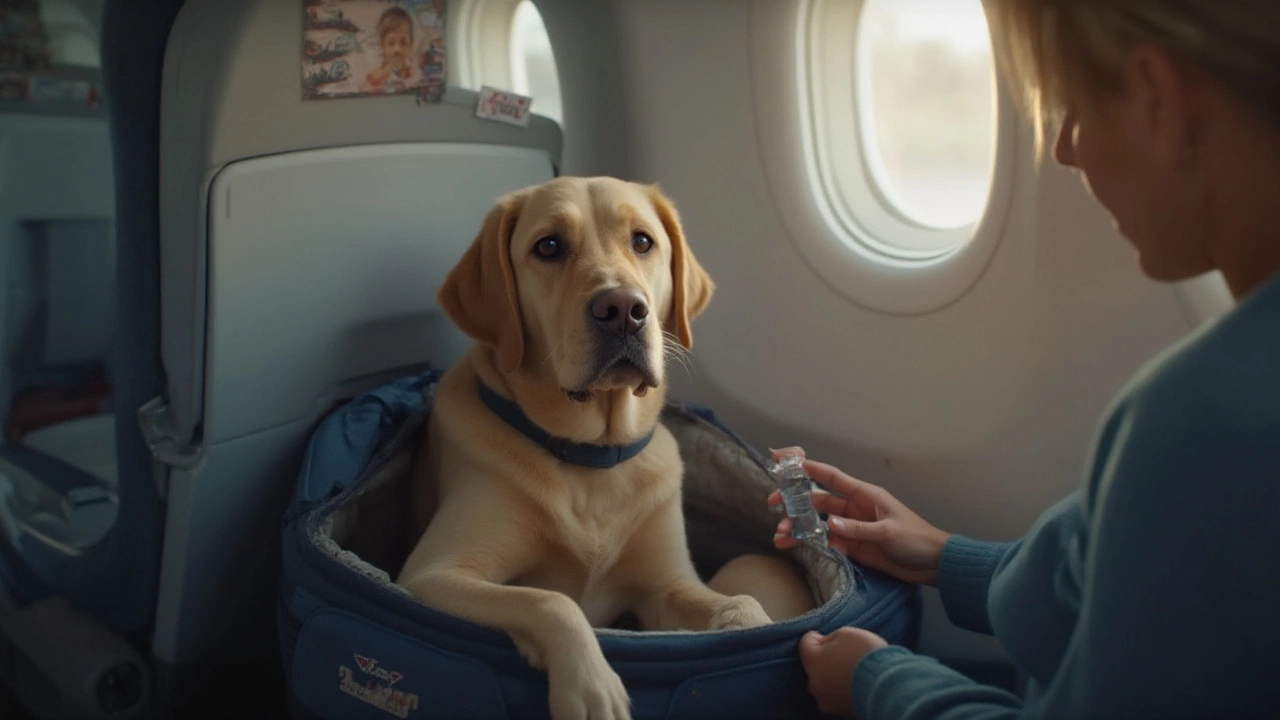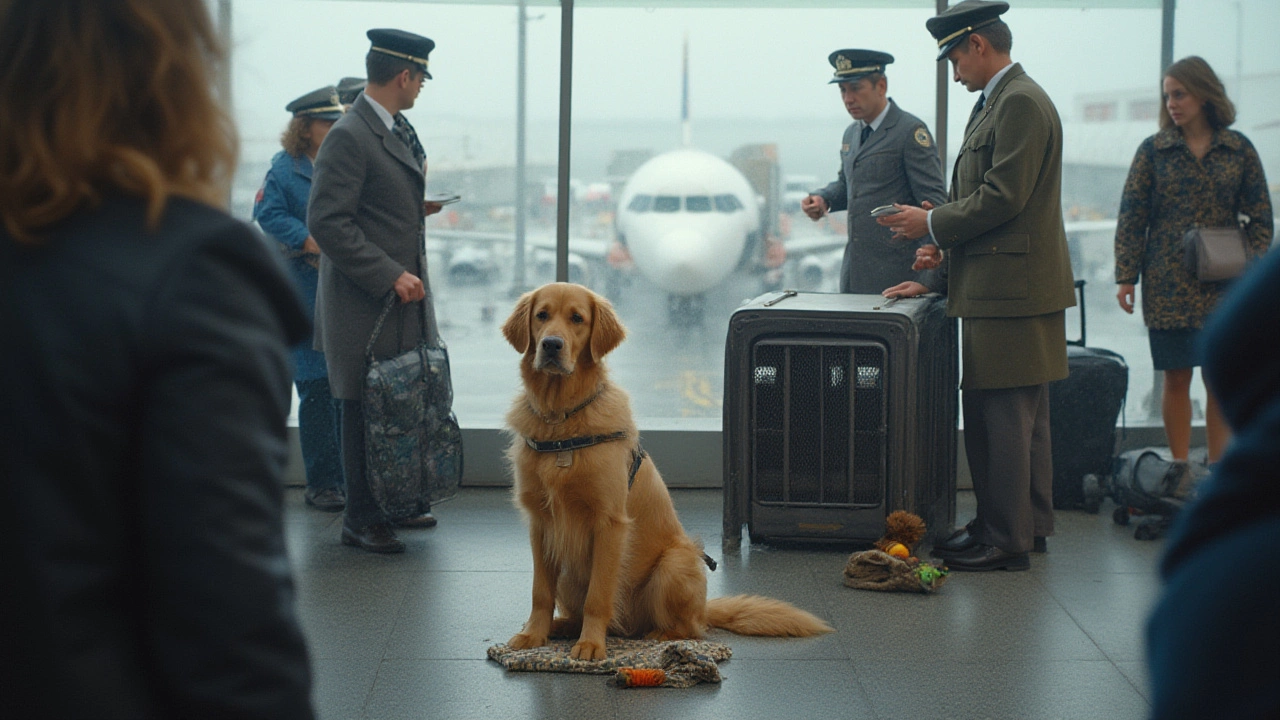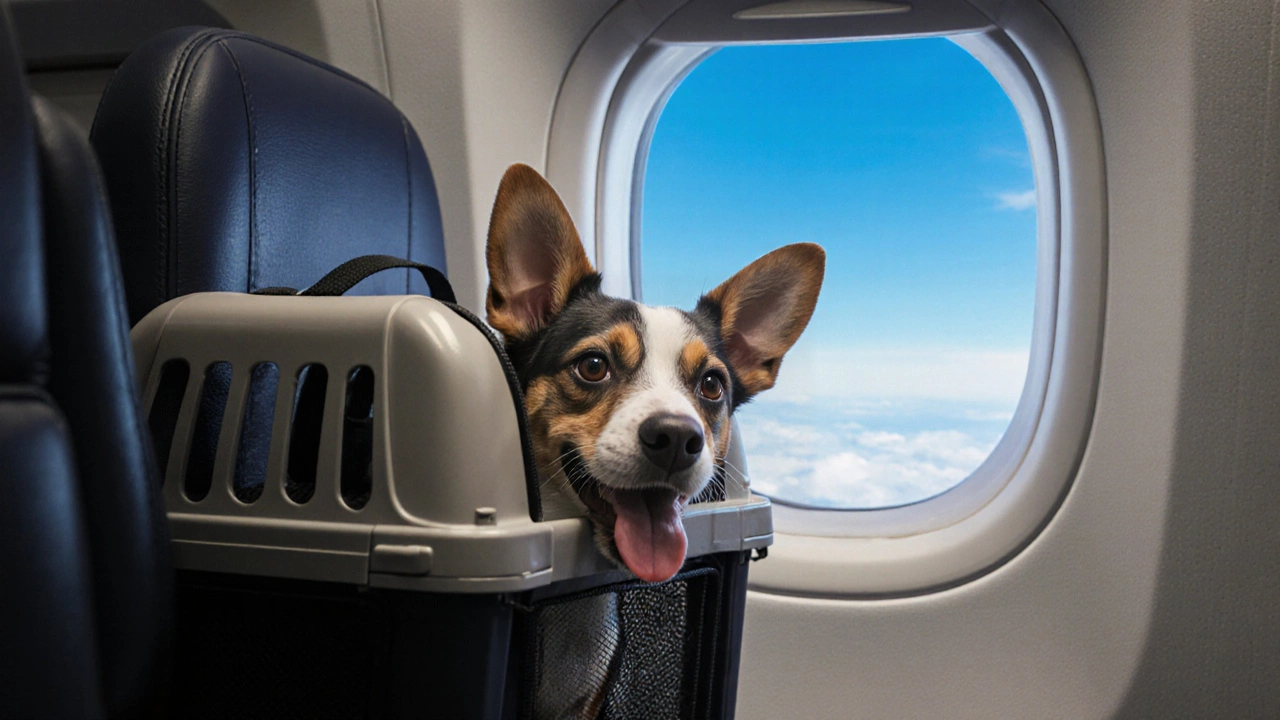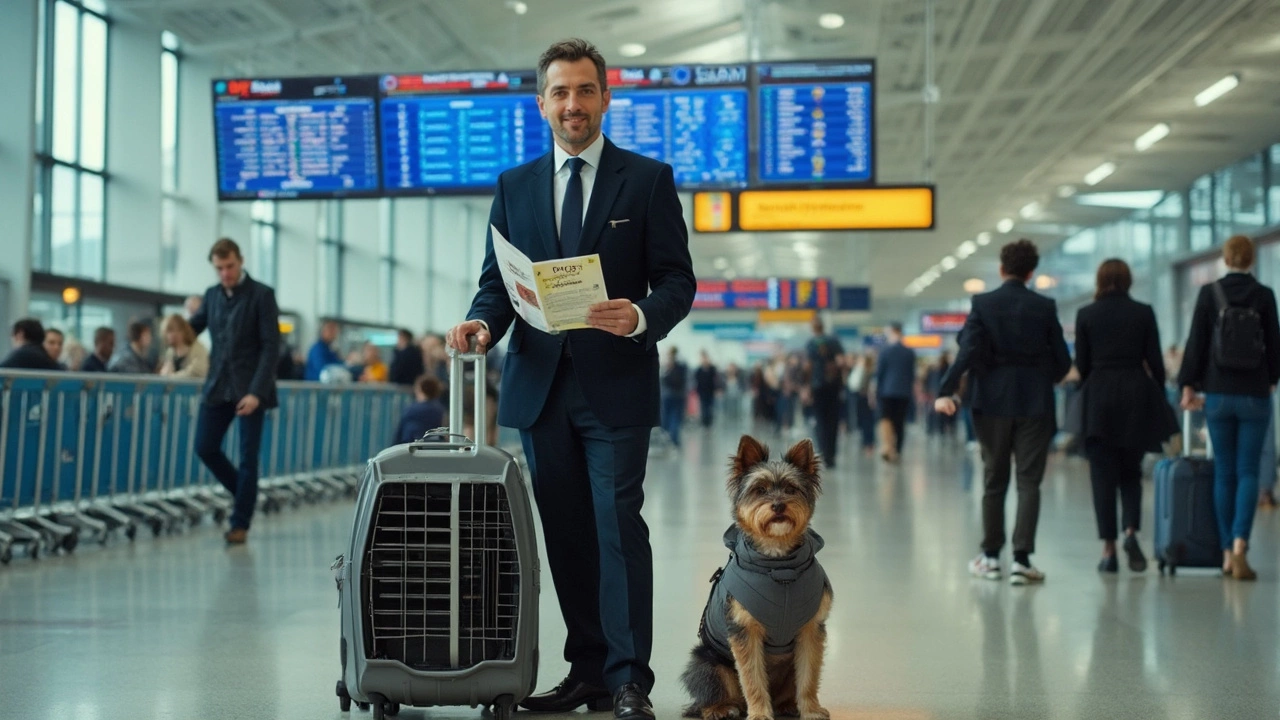Dogs have joined us everywhere—on road trips, in cafes, even at boutique hotels. But when it comes to putting a dog on an airplane, the moral alarm bells ring. And they ring loud. The web is packed with stories of panicked pets, flight mishaps, and guilt-ridden owners, right beside Instagram posts of globe-trotting pups. So, are we putting our companions through torture when we fly with them, or is it actually possible to make the skies friendly for four paws?
The Science and Reality of How Dogs Experience Air Travel
Let’s bust a myth right away—most dogs don’t view air travel the same way we do. Humans can rationalize the stuffy air, engine roar, and disruption of flight. Dogs just get the stress, often without any clue what’s happening. Scientific research out of the University of Illinois in 2022 found that cortisol (stress hormone) levels skyrocket in dogs placed in unfamiliar, high-noise environments, especially when separated from their owners. Cockpits and cabins are loud—noise levels on jet planes sit around 85 decibels. For comparison, a vacuum cleaner is 75 dB, and dogs, with their sharp hearing, take in even more.
Then there’s the matter of air pressure changes. Dogs can feel discomfort in their ears during takeoff and landing, just like we do, but they can’t equalize it as easily. Smaller breeds and flat-nosed dogs (like pugs or bulldogs) have a tougher time, since their airways are more sensitive. That’s why some airlines ban these breeds from cargo or cabin flying entirely—American Airlines and Delta, for example, put restrictions on snub-nosed breeds after a string of cargo fatalities reported to the DOT (U.S. Department of Transportation) between 2015 and 2019.
On the psychological side, being in a tight carrier, handled by strangers, separated from their owner, and surrounded by strange smells and sounds—dogs experience a perfect storm of stress triggers. This can show up as whining, barking, drooling, or even biting and panic attacks. One survey by the International Air Transport Association showed that nearly 30% of dogs that travel in cargo display signs of trauma and lasting anxiety—behavioral issues like clinginess, fear, and nervous urination can linger for weeks after the flight.
But not every dog is traumatized. Some dogs—those who are calm, well-socialized, and have had plenty of crate-training—cope quite well. Age, temperament, breed, and prior experiences matter a lot. Still, the risks and discomfort can’t be dismissed as minor.
Cargo Hold vs. Cabin: A Crucial Difference For Your Dog
Not all dog flights are created equal. Flying with your dog in the cabin, under the seat in an approved carrier, is a whole different story from being loaded into a crate and sent as cargo or checked baggage. The cargo hold is temperature-controlled and pressurized on most modern airlines, but that’s just the baseline. Mishandling can and does happen—dogs diverted due to weather, left on the tarmac, or even accidentally sent to the wrong city are all documented (Delta’s 2022 report listed six animals lost or injured during transfer).
Cargo flight horror stories get the spotlight, and with reason. The Humane Society recommends avoiding cargo unless there is absolutely no other option. Cabin travel, when allowed (mostly for small dogs under about 20 lbs/9kg including carrier), offers a much safer and less frightening experience. The dog can see you, hear you, and you can intervene quickly if things go sideways. That said, even cabin travel isn’t always comfy—flights are often delayed, cabin carriers are cramped, and your dog has to stay inside for hours, unable to stretch or potty.
Large dogs or snub-nosed breeds almost always have to fly cargo if they fly at all. That’s the moment to seriously ask: is your dog’s presence at your destination worth the risk? Some airlines have responded to safety worries by offering pet-only flights or trained animal handlers, and companies like PetSafe (United) and Alaska Airlines’ Fur-st Class program have adopted stricter protocols. But those programs cost a lot, and they’re far from the norm.
Some European carriers, like Lufthansa, actually have dedicated pet lounges and better animal handling records. Asian airlines have improved procedures too, with Singapore Airlines boasting one of the lowest animal incident rates. Still, flying a big dog internationally almost always means cargo, with all its accompanying uncertainties.

What Airline Policies and Rules Mean for Your Dog
No two airlines treat pets the same. The patchwork of rules is dizzying—size limits, breed restrictions, seasonal embargoes, carrier requirements, and even ban lists that change as airline policies shift. In 2023, major US airlines like American, Delta, and United all tightened breed restrictions, barring short-nosed breeds like boxers, pugs, and French bulldogs from both cargo and cabin on many routes following high-profile incidents. JetBlue and Southwest allow only small dogs in the cabin, usually with a weight limit around 20 lbs.
If you’re flying internationally, it gets trickier. Different countries have quarantine rules, import permits, and paperwork requirements. Australia and New Zealand are famous for strict animal import laws, meaning dogs sit through months of planning and even isolation before you can take them outside. The UK doesn’t allow pets in the cabin on almost any international flight.
Carriers and crates must meet IATA (International Air Transport Association) standards: sturdy plastic, ventilated on all sides, lockable, and just big enough for your dog to stand, turn, and lie down. Oversized pets may have to fly on separate animal transport flights—a slow, expensive, and occasionally risky process. Dogs must have up-to-date vaccines and often a health certificate less than 10 days old before travel. Sedatives are generally banned, as they can cause breathing or heart issues under changing pressure.
If you don't follow the correct rules, your dog could be refused boarding, sent back to your home airport, or worse, get stuck in transit limbo. Keep in mind: every year, dozens of dogs are left stranded due to incomplete paperwork, owner mistakes, or airline errors. That’s a nightmare you actually hear about in real life, not just online forums.
Signs Your Dog Should Not Fly—And Safer Alternatives
Some dogs simply aren’t built to handle flight, no matter how much prep you do. Puppies under 12 weeks, elderly dogs, those with breathing issues or heart conditions, and highly anxious or reactive dogs should avoid flying. If your dog is prone to panic during thunderstorms or hates the car, air travel may be overwhelming. Even otherwise healthy dogs can react badly to dehydration, heat, or loud noises.
Look for warning signs before you book. Does your dog hide during fireworks, tremble at the vet, or growl in new environments? Frequent digestive issues, motion sickness, or separation anxiety are huge red flags. Even crate-trained dogs sometimes panic in unfamiliar settings. Speak to your vet about your dog’s health and temperament—sometimes professional trainers can provide a pre-flight assessment and prepare a personalized plan.
If air travel isn’t a good fit, there are actually safe and humane alternatives. Consider driving, which lets you control bathroom breaks, comfort, and environmental stress. Pet relocation services, while pricey, use trained animal handlers and ground transport for long-distance moves. Some dog boarding facilities offer luxury suites that rival hotels—your pup can stay safe and pampered while you travel, and you get live video feeds to check in. If reuniting is a must, shipping dogs by train (where available) is a slower but less stressful option for many pets.
And sometimes, the best thing is to simply leave your dog at home in trusted care. The emotional cost of being apart is real, but it beats putting your best friend at unnecessary risk. Guilt-trips from pet-focused Instagram accounts should never overrule your judgment or your dog’s welfare.

Making Flying Safer and Less Stressful for Your Dog
If you decide flying is necessary, there’s a right and wrong way to do it. Here are hands-on steps many vets, trainers, and real-world dog owners swear by:
- Start crate training at least one month before the trip. Make the carrier a happy place—offer meals, treats, and comfort inside it.
- Take practice runs with the crate in your car, mimicking the bumps and engine sounds your dog will feel on a plane.
- Book nonstop flights wherever possible. Fewer transfers mean less risk of mishandling, delays, and extra stress for your dog.
- Arrive early at the airport and let your dog potty right before check-in. Most US airports now have pet relief areas inside security.
- Pack familiar blankets and toys with you. Scent is hugely calming for dogs—they process the world with their noses before their eyes.
- If allowed, freeze a dish of water so it melts slowly in the carrier, keeping your pup hydrated mid-flight.
- Avoid feeding large meals just before flying to prevent vomiting, but don’t starve your dog, especially if the journey is long.
- Always have a clear photo of your pet, both in print and on your phone, in case your dog is misplaced. Attach travel tags to their crate.
- Never use tranquilizers unless specifically prescribed by your vet—the American Veterinary Medical Association says they’re risky at altitude.
- After landing, offer water right away, and if your dog was in cargo, do a full health check for signs of heatstroke, injuries, or shock.
Hundreds of thousands of pets fly every year—statistically, the vast majority arrive fine. But plenty of dogs pay the price for poor planning, cargo errors, or just plain bad luck. Air travel isn’t the enemy. The problem happens when people underestimate what their dogs go through or treat them as luggage instead of family.
So, is it cruel to fly with a dog? If you force a sensitive, elderly, or sick pet through a stressful ordeal, knowing all the risks, then yes, it’s unfair. But with careful prep, an honest look at your dog’s needs, and the right flight setup, it’s possible to make air travel a lot less daunting. It’s never about what’s easiest for us humans—it’s about what keeps them safe, healthy, and (at least a little) happy at 30,000 feet. That’s the bottom line for any real dog lover considering taking to the skies.




